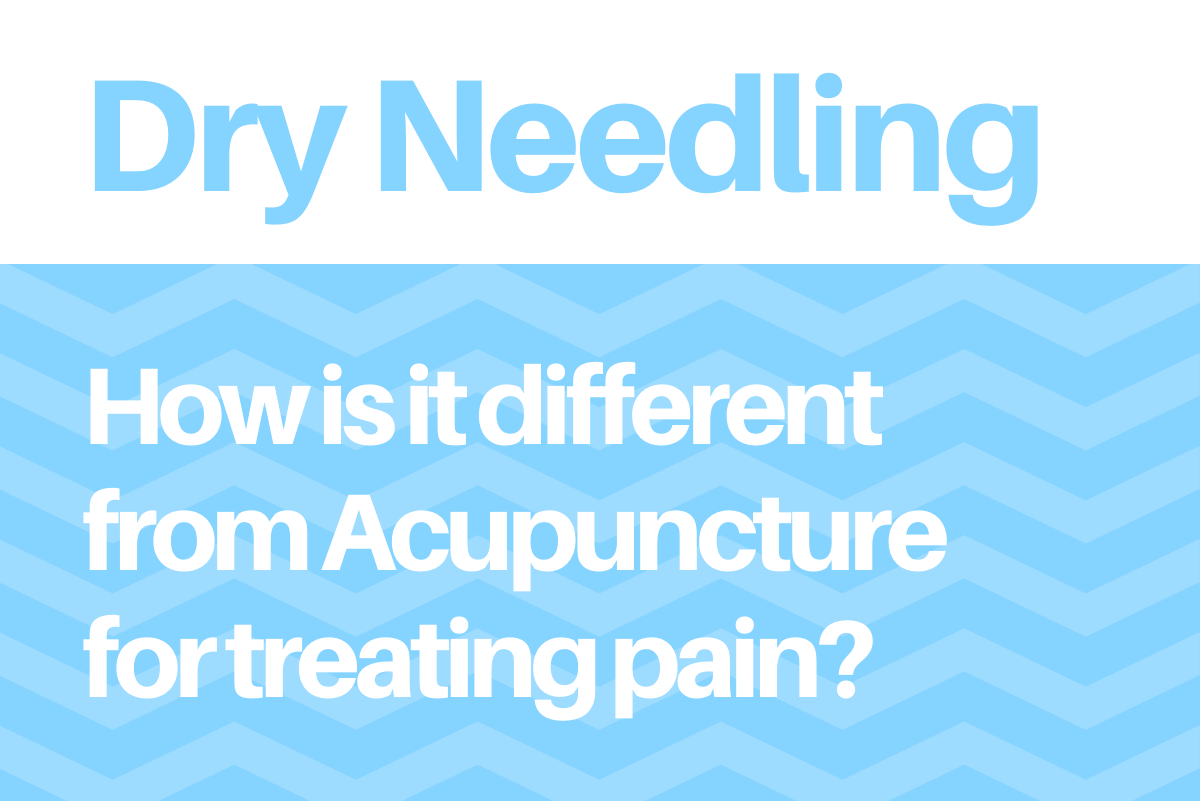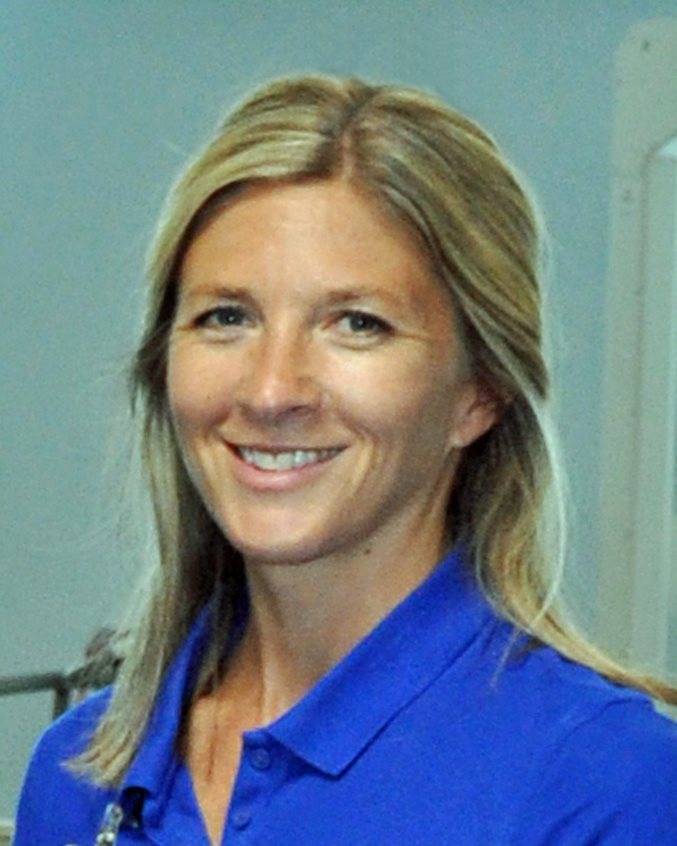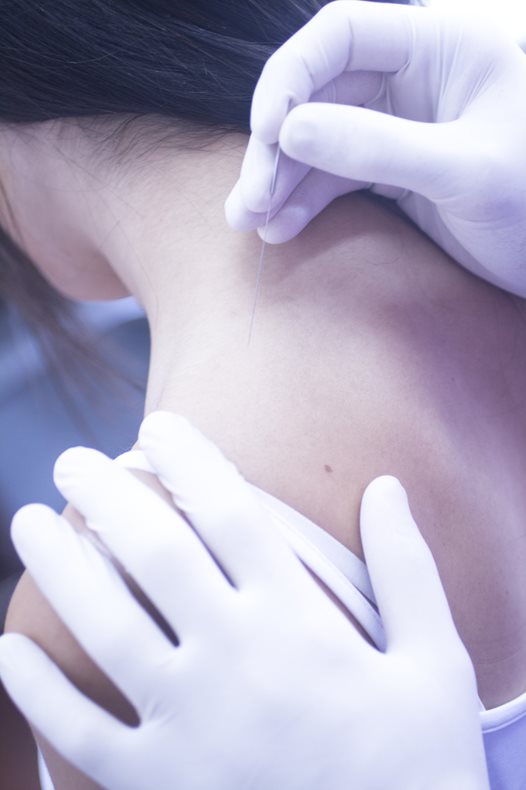How Is Dry Needling Different from Acupuncture for Treating Pain?
April 28, 2021
By: Jill Barrow, PT
Categories: Healthy Living
Is dry needling the same thing as Acupuncture?

As a physical therapist trained in dry needling, this is a question I am frequently asked when talking about treatment options with my patients.
The quick answer to this question is no. The only similarity between dry needling and acupuncture is the use of the same tool: a thin monofilament needle. But the WAY we use the tool is different.
Acupuncture is based on traditional Chinese medicine, which uses needles to follow "energy fields or channels". Acupuncturists might use any given number of needles to accomplish this and the depth of the tissue to which they insert the needle is typically superficial, little more than skin deep.
In dry needling, the use of the needle is more site-specific. It is based on where the therapist feels a taut band or myofascial trigger point, which feel like hard knots when palpated. Trigger points can cause local pain but are also thought to cause referred pain in other areas of the body by irritating nerve fibers that pass through the affected muscle tissue. For example, a trigger point in a shoulder muscle might cause pain to radiate down the arm and up into the neck. The taut bands that cause trigger points can be quite persistent, affecting muscle activation.

Once your PT identifies the location of a trigger point, they insert a needle into it in an effort to break up the taut bands and then pistons the needle up and down with the goal of getting the muscle fibers in the local area to twitch. The twitch response causes bands of muscle fiber to contract and then relax, reducing tautness and improving oxygen and blood flow to the tissue.
Does Dry Needling Hurt?
When the needle is close to or in a trigger point, the patient typically describes a dull, achy or crampy feeling. While this may be uncomfortable, it's a good sign the needle is mechanically breaking up the taut band. It is common to be sore following the treatment, but the patient can easily manage the soreness with stretching and ice.
Why Does Dry Needling Matter?
The presence of myofascial trigger points can contribute to pain in the affected muscle and associated connective tissues, reducing the muscles’ ability to contract effectively. That reduction in strength and range of motion can have a negative impact on the patient’s quality of life and ability to engage in activities they enjoy or need to do, whether that’s swinging a golf club, walking without sciatic pain, or reaching up to a high shelf. Dry needling – in conjunction with prescribed exercises that include stretching, strengthening and neuromuscular retraining – is often effective at reducing pain and restoring function.
Is Dry Needling a One-Time Treatment?
Usually not. Many patients notice some improvement after the first session, but it typically takes several sessions to achieve the results the patient is looking for.
Why Is the Needle Dry?
We call it dry needling because we are not injecting anything. The needle is not even hollow. Of course, we use only sterile needles and all needles are disposed of properly after use; we never reuse them.
What Conditions Can Be Treated with Dry Needling?
Dry needling can be helpful for numerous musculoskeletal conditions including but not limited to:
- Headaches
- Tendonitis
- Low back pain (LBP)
- Piriformis syndrome
- Neck pain
- Frozen shoulder
How Do I Know if Dry Needling Is Right for Me?
When you are referred for physical therapy, we perform an initial evaluation. We ask you about your symptoms and check factors such as strength and range of motion in affected areas. We ask how your condition impacts your life and what you want or need to do, and what your goals are for treatment. We also review your doctor’s order and any test results, images or notes they send us. Finally, we will palpate (feel) the affected area to see if a trigger point can be located and if it is appropriate for dry needling. If it is not, PTs have a range of other therapies that might help reduce pain and improve function.
How Do I Make an Appointment?
To schedule an appointment for dry needling, consult your primary care physician and ask about an order for physical therapy. You can go to APTA.org to search for a qualified PT who practices dry needling in your area or call our Outpatient Rehab Department at (706) 389-2950. As stated above, your PT will conduct a thorough evaluation to assess if you are an appropriate candidate for this treatment.
A Patient's Voice
To avoid surgery, my primary care physician first suggested physical therapy due to my frozen shoulder. Jill is my physical therapist and she suggested dry needling and I was certainly willing to give it a shot. I truly believe it has made all the difference in my continued improvement and mobility in my shoulder. I am grateful she introduced me to the treatment. I highly encourage others to consider dry needling if their physical therapist recommends it.
- DeeDee
